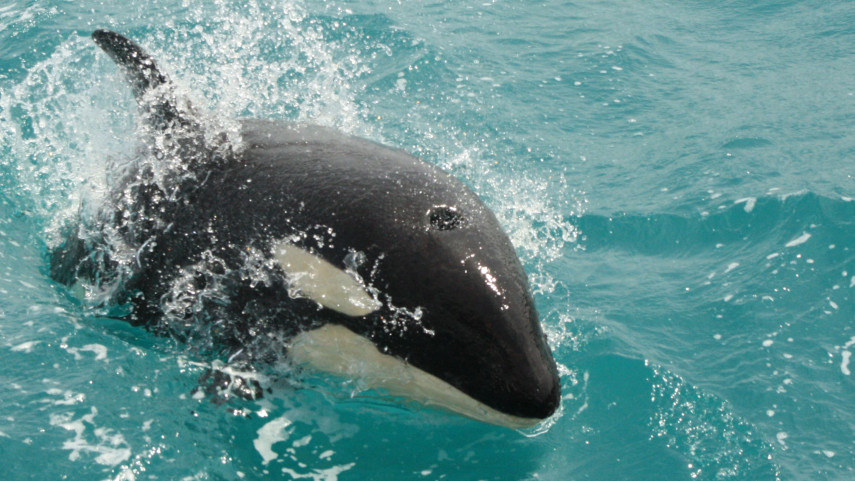'Playful' orca whales spotted in Akaroa Harbour
Share this story
A pod of 10 orca, including two young calves, has been spotted in Akaroa Harbour.
Black Cat Cruises staff were delighted to spot the pod on Tuesday afternoon. It is the first reported sighting of orca - often referred to as killer whales - off the coast of the South Island this month.
More than 80 local and international passengers aboard the 1.30pm Akaroa Harbour Nature Cruise rushed for their cameras after Black Cat Cruises skipper Julian Yates sighted the pod near the Akaroa Lighthouse.
“The pod of orca we came across included one alpha male, a second male with a damaged dorsal fin, four females, two juveniles and two calves that were approximately one or 2-years-old,” Mr Yates said.
“The younger orca were curiously approaching and hanging around our cruise boat while the males stayed distant and led the pod into Daemons Bay. It was here that we found the second male that was missing part of his dorsal fin. Dorsal fins provide stability to orca when swimming but it didn’t seem to be affecting him.”
To ensure the viewing was safe and unobtrusive, Yates slowed down the catamaran at the first sighting and turned off the engines in Daemons Bay so passengers could view and marvel one of the world’s largest apex predators. The engines were also turned off when orca approached the back of the boat.
“Orca whales are very intelligent animals that are well-organised and follow highly complex social structures within their pods which often consist of large groups of family members that can span several generations,” said Yates.
While there is not a typical orca migration season in New Zealand, Black Cat Cruises usually report a number of sightings each year with the majority occurring in spring.

Tourists aboard a Black Cat Cruise were delighted to spot orca at play in Akaroa Harbour.
Staff can determine the sex of orca by analysing the mammal’s physical characteristics. Males typically grow between seven and eight metres long and weigh up to 5.5 tonnes whereas females are smaller reaching approximately six metres in length and up to 3.6 tonnes in weight. Males also have a distinctive dorsal fin up to 1.8 metres tall. The fin of females is shorter (about 0.9 metres) and more curved.
Black Cat Cruises photographer Jonothan ‘Jono’ Hithcox described the encounter as “the best orca sighting we’ve ever had” with the viewing lasting about 20 minutes.
“We imagine the orca went into the bay to hunt stingray,” he said. “On our return trip we saw a second pod that had been spotted by another boat. We weren’t sure of the size of this pod as they were travelling north very quickly. Our passengers also saw the Endangered Hector’s Dolphin on the tour so they got to see the world’s smallest and largest members of the dolphin family.”
Black Cat Cruises’ passengers aboard the 3.40pm Akaroa Harbour Nature Cruise saw two pods of orca, along with a second alpha male. The pod was described as being “even more inquisitive and playful, interacting around the boat”.
Did you know?
- Orcas are the largest animal in the dolphin family and one of the only known cetaceans to attack sharks, whales and other large marine animals.
- Having no known predators, orcas are known as an apex or alpha predator, which means it is able to hunt freely without fear of being attacked by another marine animal.
- New Zealand is home to an estimated 150–200 orca which travel long distances throughout the country’s coastal waters. Orcas are protected in New Zealand waters under the Marine Mammals Protection Act 1978, administered by the Department of Conservation (DOC).

